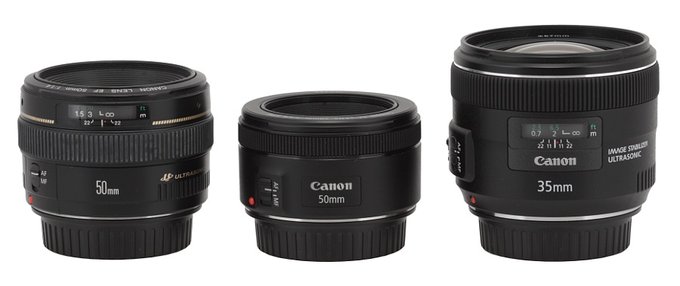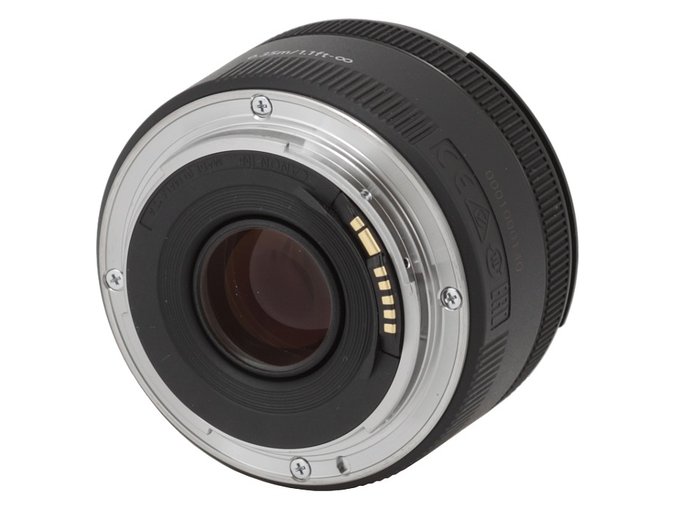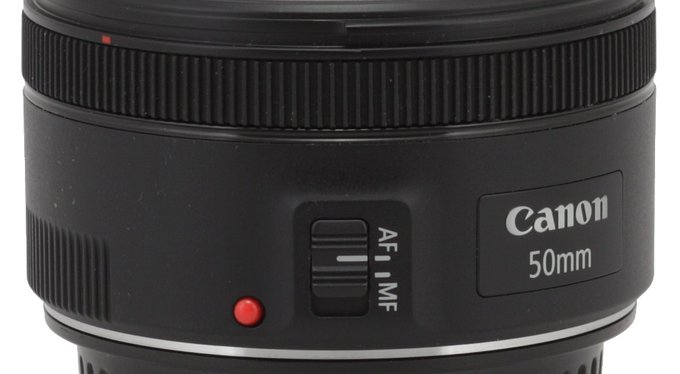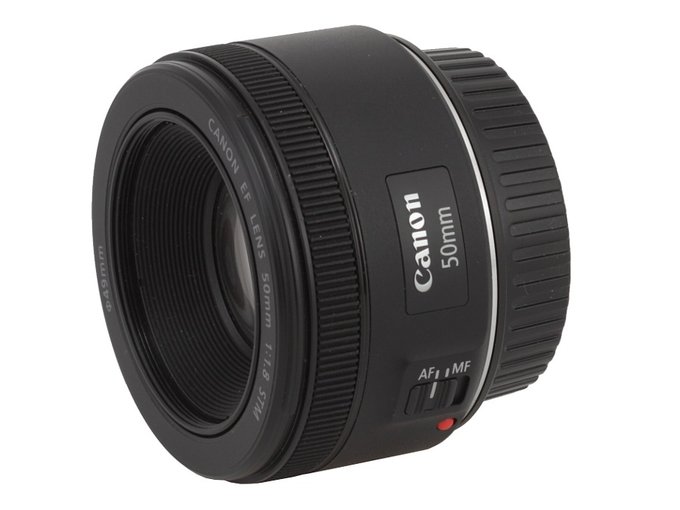Canon EF 50 mm f/1.8 STM
3. Build quality
In the photo below the tested lens is positioned between two other Canons, the EF 50 mm f/1.4 and the EF 35 mm f/2.0 IS USM.
 |
Please Support UsIf you enjoy our reviews and articles, and you want us to continue our work please, support our website by donating through PayPal. The funds are going to be used for paying our editorial team, renting servers, and equipping our testing studio; only that way we will be able to continue providing you interesting content for free. |
- - - - - - - - - - - - - - - - - - - - - - - - - - - - - - - - - - - - - - - - - - - - - - - -
As we already mentioned, the Canon EF 50 mm f/1.8 STM starts with a metal mount including a contact plate and a rear element, 23 mm in diameter. The element is surrounded by a black, plastic ring on which you can see information that the lens was produced in Malaysia. The rear element moves along the whole optical set during the focusing. When you pass to the minimum focusing distance it is hidden inside the tube over one centimeter deep. On the one side there is a nicely matted, blackened and ribbed tube. Still a bit deeper you can notice a crack through which dirt can invade the interior of the construction; while looking at it you can also get a glimpse of electronic parts which haven’t been blackened properly.
 |
When you look from above at the quite short body of the lens you see an inscription reading “Canon” and another one, “50 mm”, below it. On the left there is a switch allowing you to choose the focusing mechanism mode (AF/MF) and a red dot, making the alignment with a camera easier. On the right there is information concerning the focusing range (from 0.35 m/1.1ft to infinity) and the serial number of the lens.
 |
The next part is a ribbed manual focus ring, 7 mm wide. Its work is based on electronic relay and the ring is much more comfortable to use than the mechanical one of its predecessor which was of quite appalling build quality. Running through the whole distance scale needs a turn through an angle of about 180 degrees; still the precise value depends on the speed of the turn.
 |
Further on you see a hood mount and then the lens ends. Its front element is 24 mm in diameter and it hides inside the casing about 1.5 centimeters deep. It is surrounded by a widening, ribbed tube which also goes round a non-rotating filter thread, 49 mm in diameter (less than in the case of its predecessor) and a part of the casing with the name and the parameters of the lens.
 |
The optical construction of the new Canon consists of 6 elements positioned in 5 groups. One glance at the drawing above and you know it would be very difficult to spot here any differences between the new lens and its predecessor. Does it mean that almost nothing changes? It would be a too far-fetched conclusion. In such a small diagram you can’t notice tiny differences concerning curvature or changes in refraction and/or dispersion ratio of particular elements; also you won’t find any information concerning the anti-reflective coatings. All these features might make the new 50 mm lens’s performance distinctly different than the performance of the old one.
Inside the lens you also find an aperture with seven blades which can be closed down to a value of f/22.
Buyers get just both caps in the box. Compare it to the accessory kit which comes with the Nikkor AF-S 50 mm f/1.8G: they include a hood and a soft pouch as well.






